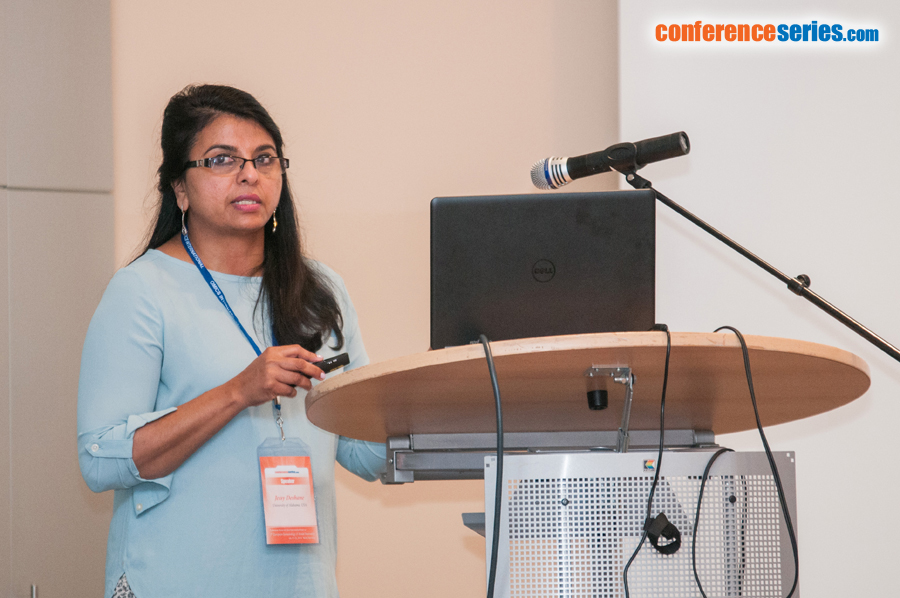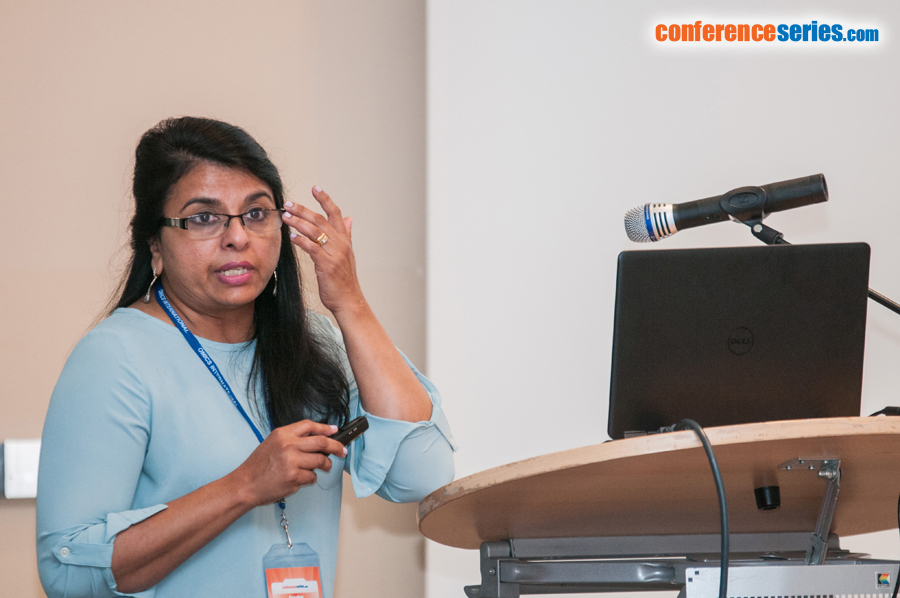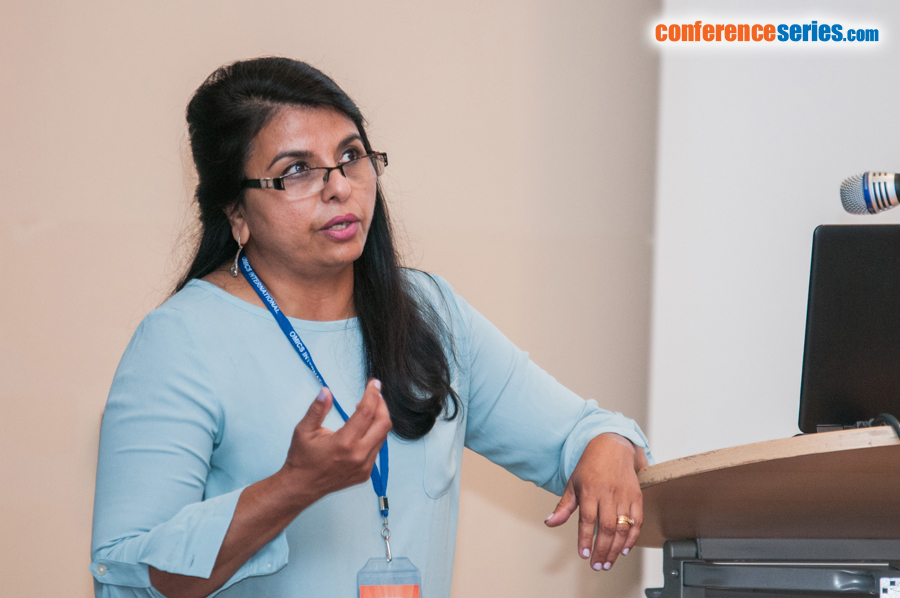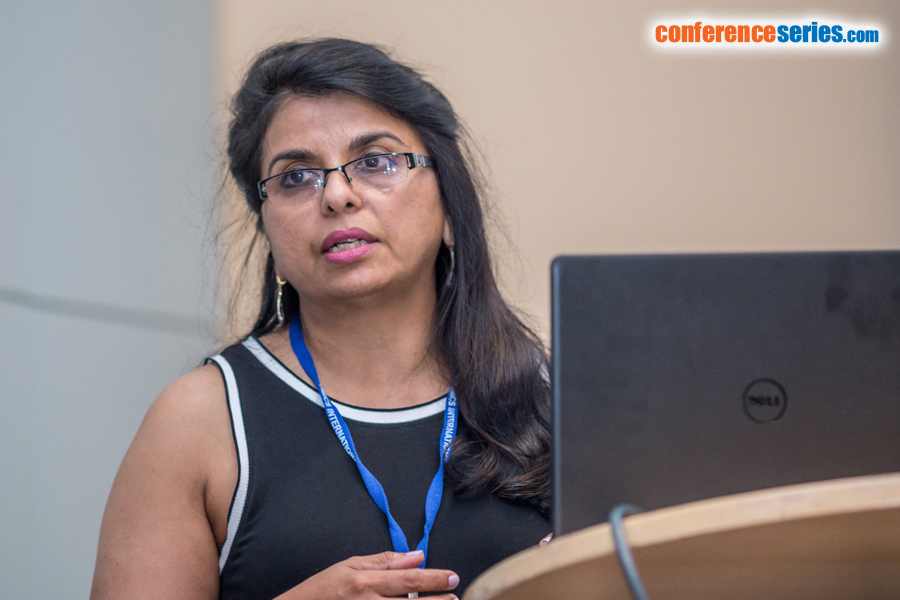
Jessy S Deshane
University of Alabama at Birmingham, USA
Title: Longitudinal changes in airway microbiome signatures and immunoregulatory cell dynamics following bronchial thermoplasty
Biography
Biography: Jessy S Deshane
Abstract
Rationale: Bronchial thermoplasty (BT) is a therapeutic option for a subset of asthmatics who continue to be symptomatic despite high dose glucocorticoid therapy. Mechanisms underlying the impact of BT on airway inflammation are largely unknown. Myeloid-derived regulatory cells (MDRCs) are important regulators of chronic inflammation in human asthma. There is also increasing appreciation for a relationship between airway microbiome and respiratory inflammation. We hypothesized that the longitudinal changes in diversity and or abundance of the airway microbiome may modulate immune regulation by MDRCs following BT and contribute to the beneficial outcome of BT. Methods: Bronchial washings (BW) and peripheral blood samples were collected at each of the three bronchoscopic procedures for BT from 5 patients with severe asthma. Multi-parameter flow cytometry was performed to enumerate MDRC subsets and regulatory T-cells (Treg). Microbial genomic DNA was isolated, 16S rDNA genes were amplified using V4 primers and PCR products were sequenced using the Illumina MiSeq platform. Sequences were processed, integrated, analyzed and reported using QIIME and in-house software. Statistical significance of longitudinal changes in microbial signatures and cell proportions were determined by linear mixed model regression analysis. Correlation between microbiome composition and time points was determined by PERMANOVA. Microbial phyla and cell MDRC subsets were correlated by linear mixed model regressing one variable to the other adjusting time points as a fixed effect and sample ID as a random effect. All analyses were conducted in the lme4 R package. Results: Significant longitudinal changes were noted at the level of phyla in comparisons of operational taxonomic unit and time points of bronchoscopies. Significant reduction in both proteobacteria (P=0.04) and verrucomicrobia (P=0.020) was observed in the BW. Correlation analyses revealed significant correlations between microbial alterations and proportions of MDRC subsets in the BW following BT. Alterations in phyla tenericutes and verrucomicrobia significantly correlated (P=0.039,P=0.0131) with the reduction in proportions of immunosuppressive CD14+CD16-HLA-DR- MDRCs in BW. Changes in phyla proteobacteria and fusobacteria correlated (P=0.002, P=0.017) with the enhancement of CD14+CD16+HLA-DR- MDRCs in the BW. Importantly, changes in kingdom Archaea; phylum euryarchaeota correlated with the progressive reduction of pro-inflammatory CD163+HLA-DR+CD11b+CD33+MDRCs (P=0.00003) and enhancement of the CD4+CD25+CD127loFoxp3+Tregs (P=0.0135) and CD14+CD16+HLA-DR- MDRCs (P=0.044) in the BW. Conclusions: Correlation of progressive modulation of airway microbiome and myeloid cell dynamics suggest a functional relationship/interaction between these components and an important contribution to immune regulation in the airways that can account for some of the benefits observed in patients following BT.






